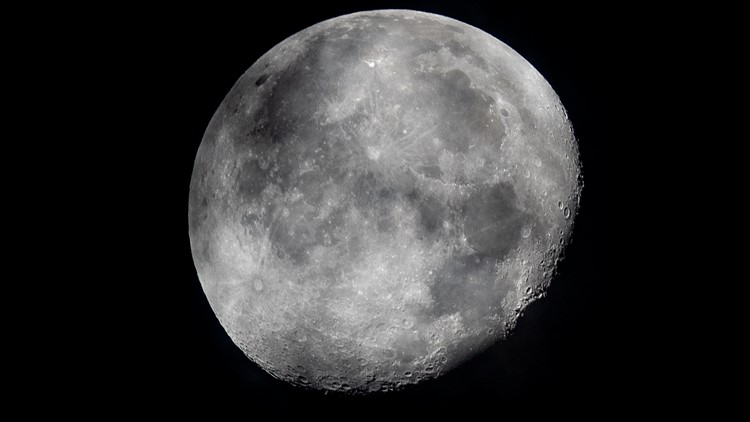FLORIDA, USA — UPDATE: Astronomers have issued a correction, saying the rocket stage set to hit the Moon on March 4 does not in fact belong to SpaceX. Instead, they're now saying it is actually from China's Chang'e 5-T1 lunar mission. You can read the latest here.
---
Previous Story
A part of a SpaceX rocket stage is going to reach the Moon in March, but it's not in the way you'd probably expect it.
Astronomers say, after seven years in orbit, a spent Falcon 9 second stage that was left in "high orbit" after a 2015 launch is now expected to hit the Moon.
Bill Gray, the creator of the Project Pluto software, says data points to a March 4 impact between the rocket stage and the lunar surface. There won't be much to see given the rocket is expected to hit the far side of the Moon.
While the idea may seem concerning, astronomers say there's really nothing to worry about. Gray addressed concerns about if the impact could somehow "tweak" the Moon's orbit.
The short answer is: "no."
"Keep in mind that this is a roughly four-ton object that will hit at 2.58 km/s. The moon is fairly routinely hit with larger objects moving in the ballpark of 10-20 km/s; hence, the craters. It's well-built to take that sort of abuse," Gray wrote.
Jonathan McDowell, an astronomer at the Center for Astrophysics, echoes the sentiment that while the projected impact is interesting, it's really nothing to worry about.
"For those asking: yes, an old Falcon 9 second stage left in high orbit in 2015 is going to hit the moon on March 4. It's interesting, but not a big deal," McDowell tweeted.
In fact, back in 2009, NASA intentionally crashed a 40-foot-long section of a rocket into the Moon in the name of science.
It was called the Lunar Crater Observation and Sensing Satellite or LCROSS mission and was used to "kick up a giant plume of debris" for a spacecraft to then fly through to identify what the plume was made of.
The "used-up rocket" was sent into the Cabeus crater near the Moon's south pole. The mission allowed for real-time images and data to be streamed back to Earth.
This time, Gray says the impact of the spent SpaceX rocket stage will be the first unintentional case that he is aware of.



